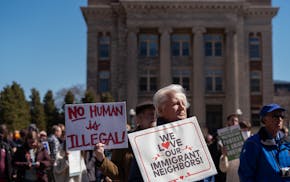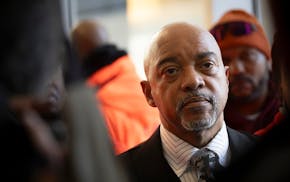ROCHESTER – Despite air travel returning to pre-pandemic levels nationwide, the terminal at Rochester International Airport (RST) remains quieter than it was five years ago.
Direct flights to Atlanta and Denver have come and gone. So, too, have takeoffs to Phoenix and Fort Myers, Fla. The only commercial options that remain today are short, regional connections to Minneapolis-St. Paul by Delta Air Lines and to Chicago by American Airlines.
The loss of flights — compounded by perceptions about price and reliability — has led to a dramatic decline in daily activity at the airport, the third busiest in the state. In the second quarter of 2024, the number of daily passengers using the airport was down nearly 48% compared to the same quarter in 2019.
As concerning for RST officials, the airport is retaining only 14% of local travelers — less than half what it was five years earlier — as it loses passengers to nearby airports, most notably MSP. RST estimates that adds up to about 1 million passengers annually in southeast Minnesota and northern Iowa choosing other airports.
"People are here. They're flying. They're just using other ways to get out there," said John Reed, executive director of RST.
For many travelers, the decision comes down to cost. While prices set by the airlines vary, flights out of RST can sometimes be double what a passenger might spend flying from MSP.
Then there's the issue of layovers. Without nonstop options beyond the Midwest, wait times between flights can either be stressfully short or painfully long — the latter particularly acute during winter months. For Tami Deedrick, who lives in north Rochester, layovers can often exceed the amount of time it takes to drive back and forth from MSP.
"It's terrible to get to MSP and know you could be home in an hour, but you have to wait for who knows how long for a flight to RST," Deedrick said. "And way too many of my colleagues have had to find an alternative way home from MSP when their flight is delayed and they miss the last RST flight."
Travelers like Deedrick create a conundrum for the Rochester airport. With proximity to MSP, many area travelers won't give RST another look until more nonstop destinations are added. Yet the only way for RST to persuade airlines to add new destinations is to demonstrate strong demand for flights.
The latest projections from the airport show that if the share of regional passengers choosing to fly out of RST increased by just 5%, it would be able to add two new direct daily flights.
"If we want more options, if we want to get back to where we were or even better, we're going to have to use the airport to prove to the airlines that we're worth their investment," said Rochester Mayor Kim Norton, who chairs the city's airport commission.
The good news for RST is that it may have already hit bottom, Reed said, and there are signs the airport is starting to take off again — albeit not to 2019 levels. The airport is expected to finish 2024 up 8% in passenger volume, in part due to an uptick in Mayo Clinic employee travel. The airport also recently secured $15.8 million in federal funds to improve its runway — and the reliability of its flights.
Justin Haase, who lives in nearby Mantorville and travels out of RST a few times a month for work, said the benefits of the airport often go beyond the initial price tag. While he acknowledged costs out of RST can occasionally be "completely bananas," he has found that most times the benefits of flying from Rochester — from shorter security lines to cheaper parking — can be enough to offset higher flight prices.
"I encourage all my friends and family to at least check the fares — they sometimes are really good," Haase said. "Even if it might be a few dollars more, the time savings and the convenience have a value that must be considered."
Regional airports still suffering
While many major airports have fully bounced back from the pandemic, it has been an entirely different story for regional airports like RST. Since 2020, airlines have left more than 120 markets across the country, many of them in small and mid-sized cities, according to the Regional Airline Association.
In Rochester, Delta dropped its Atlanta route in 2021 just four years after adding a second daily flight there. The same year, United dropped a nonstop route from RST to Denver after just one year. Sun Country, one of the state's most popular budget airlines, later added flights to Florida and Arizona, but those were grounded within two years.
In many cases, the airlines made the decisions not because of a lack of demand but because they needed to shift resources to other areas, Reed said. The Denver flight, for example, was at 89% capacity when United ended the route so the plane could be moved to a different market.
"Airports of this size are struggling right now," Reed said. "And that's because of a pilot shortage as well as an aircraft shortage right now. The problems of Boeing and Airbus have kind of stymied new aircraft being bought by the major airlines, and consequently the regional airlines as well."
In May, the Rochester City Council voted to approve $1.5 million in funding for the airport to recruit new flights to the city, with a focus on attracting low-cost leisure airlines to add direct routes in and out of RST.
Phoenix, Orlando and Las Vegas are target destinations. Reed said federal data shows there is also demand in the region for an Atlanta connection, which he is confident will return as an option.
"We know that the market is here," he said. "We're not creating it out of thin air. It's already here. But we need to get our volumes back … and I will say a lot of times our pricing is good. A lot of times the schedule does work. So, don't leave us off of your thought process as we begin to grow again."

Immigration detentions of international students expand beyond protesters

GOP legislators join Democrats in passing Klobuchar's resolution to undo Trump's tariff on Canadian imports
Deadlock and disappointment as St. Paul fails to pick an interim city council member
Trump announces sweeping new tariffs to promote US manufacturing, risking inflation and trade wars

